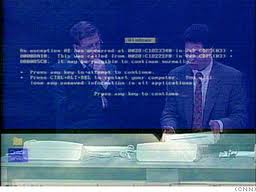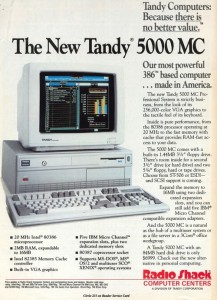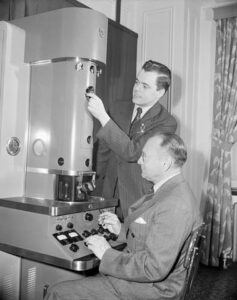Archive for April 2024
First YouTube Video
 April 23, 2005
April 23, 2005
The first video uploaded to YouTube, “Me at the zoo,” is posted on April 23, 2005 at 8:27 PM by co-founder Jawed Karim. For now being a piece of history, the video is actually pretty dumb.
Note to future entrepreneurs: what you do may be for posterity. Choose wisely.
Mosaic 1.0
 April 22, 1993
April 22, 1993
Version 1.0 of the web browser Mosaic is released by the National Center for Supercomputing Applications. It’s the first software to provide a graphical user interface for the emerging World Wide Web, including the ability to display inline graphics. The lead Mosaic developer is Marc Andreesen, one of the future founders of Netscape.
My first experience with the World Wide Web was in 1993 using Mosaic on a Mac in my dorm’s computer lab. I had no idea what I had discovered until a few months later.
IBM Licenses PC Patents
The Tandy Corporation holds a press conference to announce plans to build clones of IBM’s PS/2 system computers. The conference comes soon after IBM’s announcement that it would license patents on key PC technologies. IBM made this decision as they realized they were losing control of the “IBM-compatible” PC market and could make more money licensing the technologies. Within five years, IBM clones will become more popular than the original IBM machines themselves. Eventually IBM would leave the PC manufacturing business altogether, selling their PC division to Lenovo in 2005.
Windows 98 is Plug and … Whoa?
 April 20, 1998
April 20, 1998
During the COMDEX Spring ’98 and Windows World shows in Chicago, a public demonstration of the soon-to-be released Windows 98 goes awry when Bill Gates’ assistant causes the operating system to crash after plugging in a scanner. Instead of showing the plug-and-play capabilities they were trying to demonstrate, a “Blue Screen of Death” is visible by the entire audience which immediately erupts in laughter. After several seconds, Bill Gates famously responded, “That must be why we’re not shipping Windows 98 yet.”
Ironically, the assistant, Chris Capossela, has moved up the executive ranks at Microsoft, all the way to Executive VP and Chief Marketing Officer. For Microsoft’s sake, hopefully he’ll present a much better marketing image then he did that fateful day!
Demonstration of First Practical Electron Microscope
Vladimir Zworykin, research director at RCA, holds a public demonstration of the first practical electron microscope. While the electron microscope had originally been invented in 1931, the first model was only able to produce a magnification of 400X. RCA’s model was the first to create a magnification of 100,000X, which was truly the first practical application of an electron microscope. This early model was 10 feet high and weighed half a ton. That thing was huge, especially considering it was meant to magnify really tiny things!
Vladimir Zworykin is also famous for being one of the inventors of the television.


